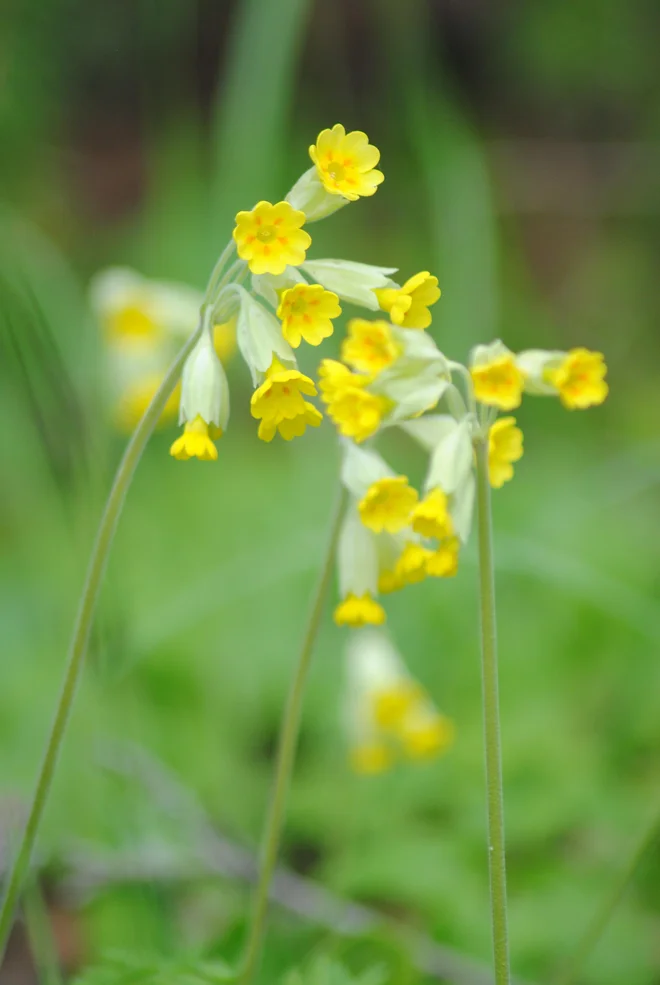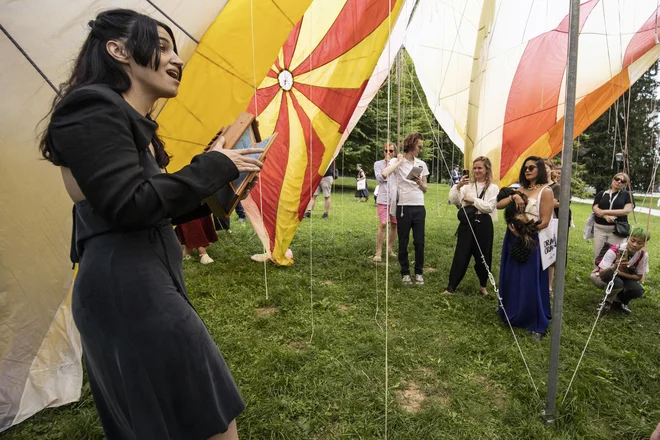Yellow beauty has been chasing old and young all over Europe

In the spring, when the meadows flood the flowers, these become gorgeous colorful carpets. In some places with yellow flowers, the spring eel is far away, a plant that was already interested in the author of theory of evolution Charles Darwin. In the last few years, the spring eels have been « hunted » by researchers from all over Europe, together with the lay public.
Spring eel (Primula veris) is a perennial that grows and blooms in the same place for many years and announces spring. Not rarely anyone replaces it with a trumpet or ordinary eel (Primula vulgaris) and other related species, as some are quite similar.
Spring eels bloom from March to May and grows almost all over Europe and Asia, on solar meadows, along forest borders and across shrubs in the mountain world. Usually in the lowlands it blooms as early as April or even in March, flowering then in proportion to the altitude lasts until the end of May.
In colder environments, especially the higher the hills, it can bloom until mid -June. In Estonia, this plant species began to disappear, so the researchers there initiated the project We are looking for spring eeleto protect the yellow beauty and point out the importance of disappearing not only the species mentioned, but also others. In nature, no species is irrelevant, even though it is small and (only) seemingly without influence on its surroundings. In 2019, the Estonians obtained data on 220,000 eel specimens with more than 1,700 locations, and then decided to expand their research to all of Europe.
Spring eel is a perennial. Photo: Kaarel Kaisel
In the years 2021 and 2022 (during the pandemic therefore), volunteers and volunteers from 30 European countries participated in the hunt for spring eels who obtained data for more than 5200 plant populations. In Slovenia, the campaign included the University of Primorska, the Botanical Garden of the University of Ljubljana and the Eco -School program. The findings of the survey were published in a magazine in January this year Journal of Ecology.
And what did they show? “Small populations are more genetically impoverished. The study also found that nearly ten percent more flowers with L -shaped are appeared in spring eel, « explained one of the project coordinators in our country, Head of the Biodiversity Department of the Faculty of Mathematics, Natural Sciences and Information Technology, University of Primorska Živa Fischer. Such an imbalance, however, is not welcome.
Flowers with and flowers l
The spring eel is heterostylene, which means that in nature we find flowers of two shapes – S and L. The first is noticed in the center of five dusts, while in shape L there is only one round structure, namely the upper part of the pest, called furrow. The shape s is a shorter name for flowers with short pests (S derived from the English word short) that are hidden between the petals, while the male reproductive organs – the stamens – are longer and visible from above.
The design L means a version with a long (angl. pollen) to the fists, so visible outwards, and shorter stamens hidden between the petals. For successful reproduction, spring eel shapes L must extend their pollen to specimens of shape S and vice versa. The plant cannot pollute itself.
Cross pollination between different types of flowers further promotes the exchange of genetic material, thus increasing genetic diversity. High genetic diversity, however, is a very important factor in maintaining the ability to survive and long -term plant resistance.

High genetic diversity is a very important factor in maintaining the ability to survive and long -term plant resistance. Photo: Ziva Fischer
When asked who pollinates spring eels, Ziva Fischer replied that these were most often bees and bumblebees. And where did she « hunt » the spring eel herself? « There are many of us on the Banjska plateau, in the vicinity of Čepovan and in the Trnovo forest – in slightly higher positions, » the researcher explained. The imbalance between the number of flowers of the S – more of them were where the summer months are more rainy and more intense, as well as where the habitats are closer to human residences – and L has shown that we may be witnessing evolutionary changes, Fischer explained.
Any such imbalance in nature has certain consequences. In the case of spring eel, it is difficult to cross pollination in smaller populations, which, as Živa Fischer added, « can lead to a further decline in the species that is endangered in some countries. » However, if the cause of these surprising results is elsewhere, they will (maybe) take up future research.

In cooler environments, spring eels can bloom until mid -June. Photo: Iris Reinula
How did data collection across Europe even go? The hunt for Jeglič was quite simple, and the researchers also published the instructions on a specially created website. « Hunters » had to find plants in nature and see their flowers and inspect their flowers in 100 plants whether they have flowers with or L.
The information was then entered into the application or transmitted on the form. Another important aspects of the project are looking for spring eels was the involvement of residents or volunteers in data collection. So -called Citizen Science Whether citizens’ science is a popular way for the general (lay) public to integrate into important scientific projects, since – at least in this concrete project – children and adults can be learned from the disappearance of plant species.
Drastic changes in the landscape or improper management of meadows can lead to the disappearance of individual plants, in Estonia this happened with the spring eel.
Blanka Ravnjak Years ago, when hunting for a plant began in Slovenia, the botanical garden was not disappearing in Slovenia, but this can happen quickly when the meadows are improperly managed. If we mow the lawns too fast, let them overgrow them, or to fertilize them extensively, the path to extermination of the plant can be short.







:format(webp)/s3/static.nrc.nl/images/gn4/stripped/data133280221-bb4cba.jpg)
